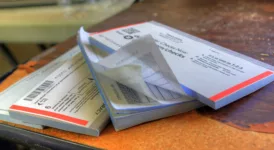Most people find it quite confusing to differentiate between a check stub and a check. The situation is more evident if you have been employed for the first time or are just starting in the banking world. In most cases, employers who write or print checks give the employee both the check and a check stub to explain the calculation of his or her final pay. However, we still have instances where employers write a check but don’t attach the stub. The case is more common for independent workers and contractors. Individuals who receive their payment through direct deposits can also be given check stubs as a proof of payment.
We can define a check as a written order that directs the bank to pay money. When you receive a check as payment, it will authorize the bank to pay you the full amount on the check from the account of the person who drew the check. In case the check provider’s account has insufficient funds, no money will be credited to your account. A check is a legally binding document and you can use them in court to show a contract between the writer and recipient.
You will basically find three types of information in the check. This includes the bank information, provider information, and recipient information. It will have the full legal names of the recipient, and full amount being paid in standard numeral and numeral form. The check also has the contact information of the writer including his name or company name, contact phone number, and address. It also has the bank info including the routing number and the writer’s account number. The logo of the bank should also be prominently displayed on the check. A check that does not have all this information will not clear. Employers exchange checks for the good or service that they receive. They serve a similar function like currency and represent a legal tender.
On the other hand, a check stub is a record that details the information that is contained in the check. Employers normally submit the check to the bank in exchange for cash value and the person who is cashing the check does not retain any proof. Therefore, the check recipient will traditionally retain the check stub as a receipt.
It is important to understand the kind of information that you need to find in the check stub. The check stub maker will include the following information; account identity information (last four digits of your social security number and employee number, etc.), the business information of the person writing the check stub (name, address, etc.), check amount, and a clear breakdown of how the final amount of the check was calculated (fees, deductions, etc.). The history of payments over a given period may be displayed over some check stubs especially the payroll ones. In most cases, the recipient uses the pay stub as a proof of earning. These are also legal payment records as they verify the amount that the employer paid out. With all this information, you can now differentiate between a check and check stub.
Photo via Good Free Photos








